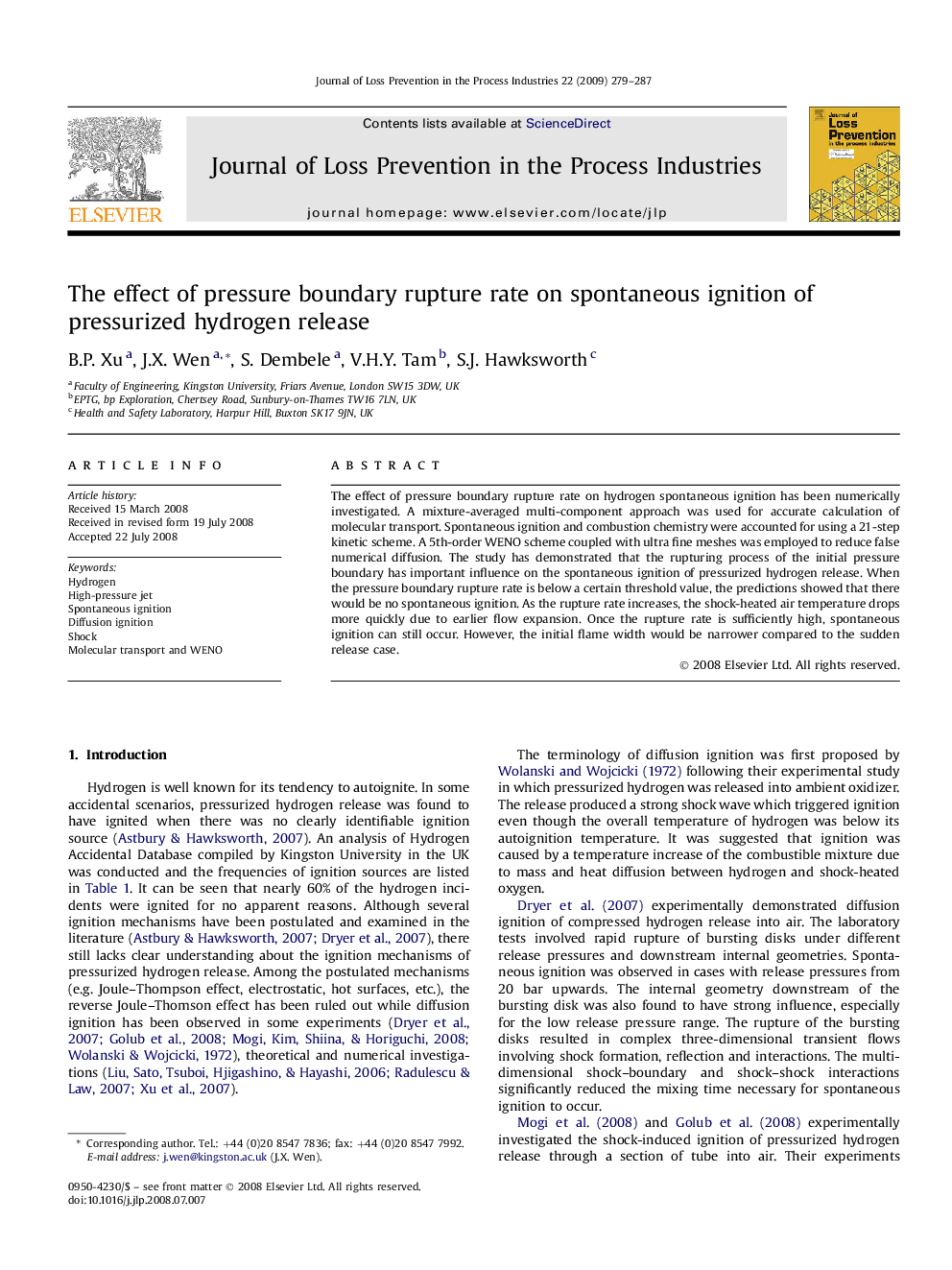| Article ID | Journal | Published Year | Pages | File Type |
|---|---|---|---|---|
| 587189 | Journal of Loss Prevention in the Process Industries | 2009 | 9 Pages |
The effect of pressure boundary rupture rate on hydrogen spontaneous ignition has been numerically investigated. A mixture-averaged multi-component approach was used for accurate calculation of molecular transport. Spontaneous ignition and combustion chemistry were accounted for using a 21-step kinetic scheme. A 5th-order WENO scheme coupled with ultra fine meshes was employed to reduce false numerical diffusion. The study has demonstrated that the rupturing process of the initial pressure boundary has important influence on the spontaneous ignition of pressurized hydrogen release. When the pressure boundary rupture rate is below a certain threshold value, the predictions showed that there would be no spontaneous ignition. As the rupture rate increases, the shock-heated air temperature drops more quickly due to earlier flow expansion. Once the rupture rate is sufficiently high, spontaneous ignition can still occur. However, the initial flame width would be narrower compared to the sudden release case.
